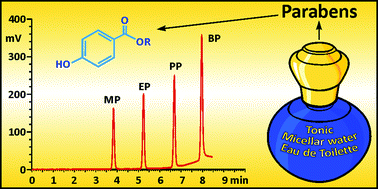Determination of parabens in cosmetic products using high performance liquid chromatography with fluorescence detection
Abstract
Parabens are preservatives with a broad spectrum of antimicrobial activity widely used in cosmetics, foods and pharmaceuticals. Reports suggesting estrogenic activity and lack of appropriate data on safety of some parabens led to introduction of law legislation restricting their use in cosmetics. As a result, only methylparaben, ethylparaben, propylparaben and butylparaben can be currently used in the European Union with concentrations restricted to below 1%. Therefore, a simple analytical method using HPLC with fluorescence detection was developed for the determination of these parabens in cosmetic products including tonics, micellar waters and eau de toilettes. The high sensitivity and selectivity of fluorescence detection (with excitation and emission wavelengths set to 254 nm and 310 nm, respectively) as well as appropriate chromatographic separation (with a methanol–water gradient on an octadecylsilica column) enabled analysis with very simple sample preparation including only a dilution step. The obtained limits of quantitation in the range from 24 to 46 μg mL−1 enabled the determination of parabens in accordance with the regulations issued by the European Parliament and the Council while only very simple and inexpensive laboratory equipment was used. Over 20 cosmetic samples were tested and the determined parabens were not exceeding the established limits. The samples were also subjected to HPLC analysis with mass spectrometric detection which confirmed the obtained results.


 Please wait while we load your content...
Please wait while we load your content...